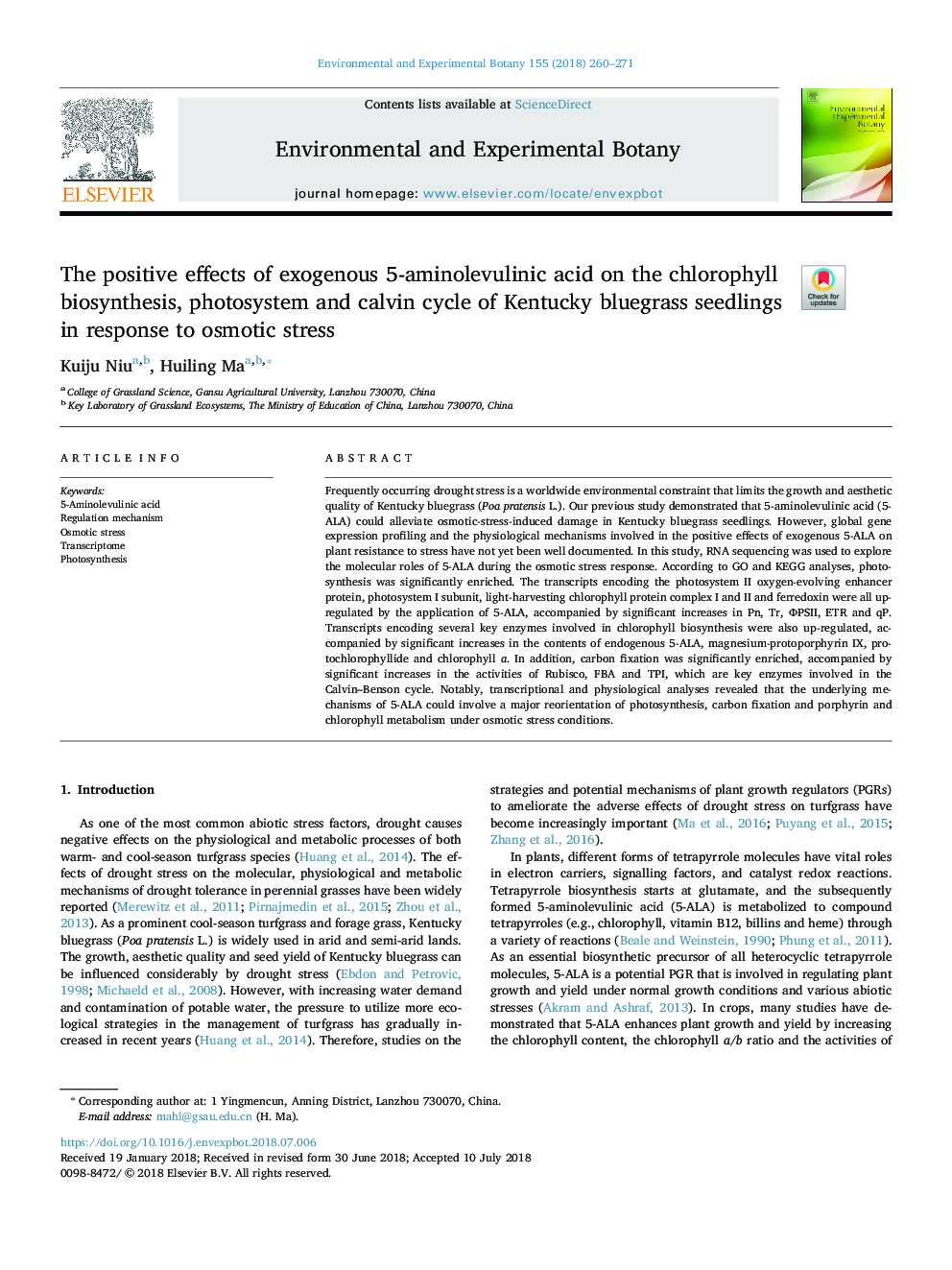| Article ID | Journal | Published Year | Pages | File Type |
|---|---|---|---|---|
| 8886850 | Environmental and Experimental Botany | 2018 | 12 Pages |
Abstract
Frequently occurring drought stress is a worldwide environmental constraint that limits the growth and aesthetic quality of Kentucky bluegrass (Poa pratensis L.). Our previous study demonstrated that 5-aminolevulinic acid (5-ALA) could alleviate osmotic-stress-induced damage in Kentucky bluegrass seedlings. However, global gene expression profiling and the physiological mechanisms involved in the positive effects of exogenous 5-ALA on plant resistance to stress have not yet been well documented. In this study, RNA sequencing was used to explore the molecular roles of 5-ALA during the osmotic stress response. According to GO and KEGG analyses, photosynthesis was significantly enriched. The transcripts encoding the photosystem II oxygen-evolving enhancer protein, photosystem I subunit, light-harvesting chlorophyll protein complex I and II and ferredoxin were all up-regulated by the application of 5-ALA, accompanied by significant increases in Pn, Tr, ΦPSII, ETR and qP. Transcripts encoding several key enzymes involved in chlorophyll biosynthesis were also up-regulated, accompanied by significant increases in the contents of endogenous 5-ALA, magnesium-protoporphyrin IX, protochlorophyllide and chlorophyll a. In addition, carbon fixation was significantly enriched, accompanied by significant increases in the activities of Rubisco, FBA and TPI, which are key enzymes involved in the Calvin-Benson cycle. Notably, transcriptional and physiological analyses revealed that the underlying mechanisms of 5-ALA could involve a major reorientation of photosynthesis, carbon fixation and porphyrin and chlorophyll metabolism under osmotic stress conditions.
Related Topics
Life Sciences
Agricultural and Biological Sciences
Ecology, Evolution, Behavior and Systematics
Authors
Kuiju Niu, Huiling Ma,
